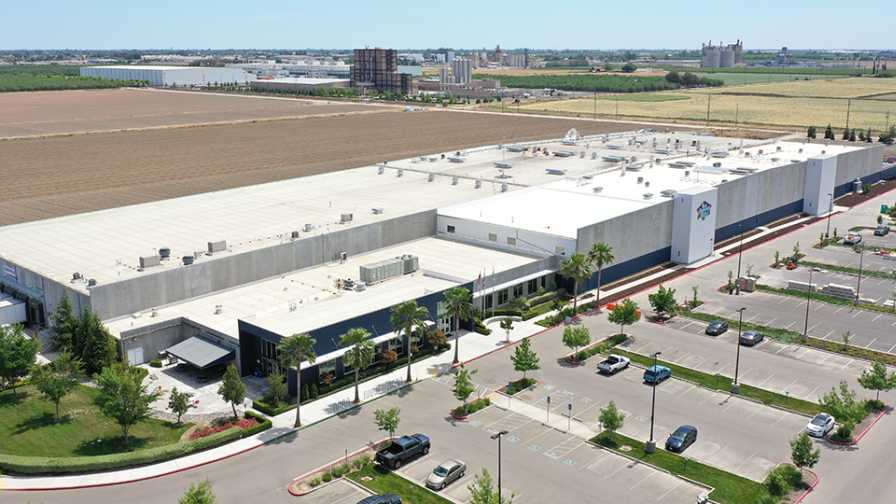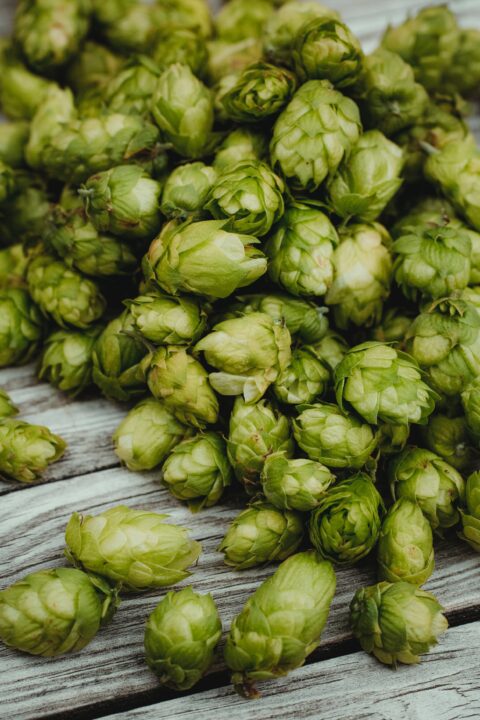Blue Diamond Growers Unveils Major Expansions

The expansion at Blue Diamond’s Turlock site adds 52,000 square feet to the existing facility.
Photo courtesy of Blue Diamond Growers
Blue Diamond Growers, a nonprofit, grower-owned cooperative — and the world’s leading processor and marketer of almonds — marked its 110-year anniversary in May with announcements about the completion of two key infrastructure expansions.
As part of Blue Diamond’s long-range strategic vision, two major expansions at the co-op’s facilities in the heart of California’s Central Valley almond-growing region have recently been completed.
The first expansion is a 52,000-square-foot addition to the existing 200,000- square-foot Turlock manufacturing plant that first opened in 2013 and sits on 88 acres. In 2014, Food Engineering magazine recognized the Turlock facility as Plant of the Year for innovation, manufacturing excellence, and sustainable operations.
The recently completed construction expands Blue Diamond’s value-added almond processing capabilities with an automated factory that features state-of-the art handling, processing, and packaging equipment. The expansion also provides space for a future manufacturing line to support current business or new innovations.
The second expansion is the new Bulk 8 Warehouse at the Salida facility that originally opened as an almond receiving station in 1969. Today, the 675,000-square-foot facility sits on 44 acres and includes a retail nut and gift shop located on the Central Valley’s main thoroughfare, Highway 99.
The new 58,000-square-foot bulk storage facility, which had been scheduled to be completed by the end of May, will provide an additional 50 million pounds of in-house bulk almond storage capacity in time to receive the 2020 almond harvest. The 65-foot-tall building’s advanced design features an automated, gravity-fed spiral conveyance system that improves grower delivery efficiency and reduces damage to the almonds.

Salida’s new state-of-the-art Bulk Warehouse 8 will store an additional 50 million pounds of almond meats.
Photo courtesy of Blue Diamond Growers
CELEBRATING MILESTONES
“It is particularly meaningful for Blue Diamond to be able to commemorate our Founders Day by not only recognizing our humble beginnings 110 years ago but also celebrating two key growth milestones that help secure our future,” Mark Jansen, Blue Diamond Growers President and CEO, says. “I couldn’t be more proud that, despite the unprecedented challenges businesses around the world have faced over the past two months, our incredible team has been able to sustain operations as an essential food supplier while completing these critical expansion projects ahead of schedule to meet customer needs.”
Jansen noted because of the COVID-19 pandemic, Blue Diamond, along with partners Union Pacific and Sun-Maid Growers of California, committed to a donation match of $50,000 to help support three food banks in Northern and Central California that are struggling to meet significant demand from local families in need.
“When we opened each of Blue Diamond’s three main facilities, we made a commitment to invest in our infrastructure, in our workforce, and in the individual communities where our employees and almond growers live and work,” he says. “Throughout the year we support local nonprofits through our community grants, sponsorships, employee volunteerism, and product donations.”
Blue Diamond Growers was founded by a handful of California almond growers on May 6, 1910. Originally known as the California Almond Growers Exchange, the grower-owned cooperative quickly grew into the world leader in growing, processing, and marketing almonds and almond ingredients. In 1914, the exchange opened a receiving and packaging plant in Sacramento that eventually became the largest almond processing plant in the world.
Today the Sacramento plant sits on 90 acres, covering 33 city blocks and serves at the cooperative’s headquarters. In 1915 the co-op adopted the symbol of a blue diamond — the finest grade of diamond in the world — to signify its commitment to quality, and in 1980 the cooperative’s name was officially changed to Blue Diamond Growers.
California produces 80% of the world’s almond supply, and almonds are the state’s largest food export item. Blue Diamond Growers’ 3,000 members account for roughly half of the state’s almond producers.










